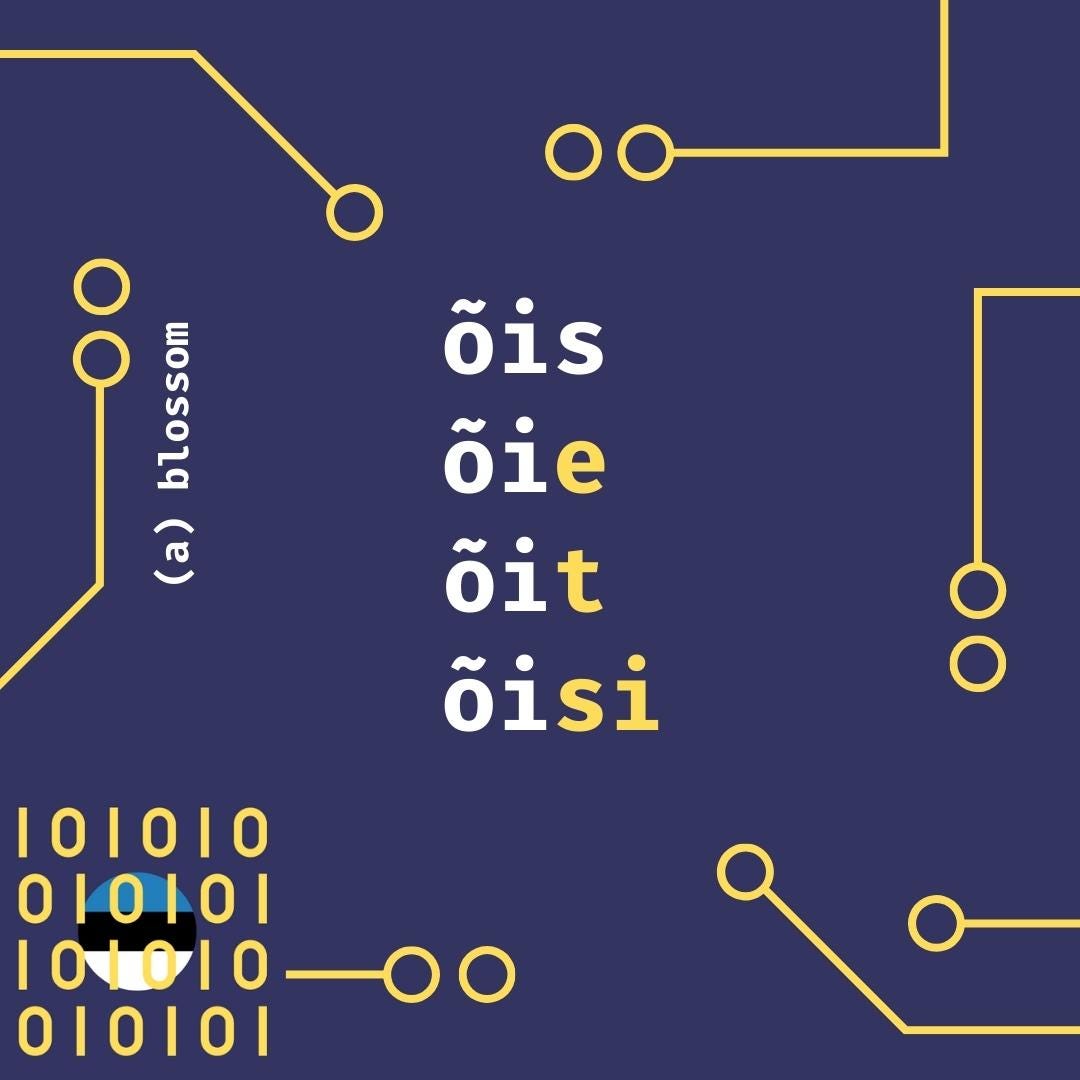blossom (noun), flower
Building blocks
This word cannot be broken down further, it’s from a Proto-Baltic root.
That means that its closest relatives are actually from Lithuanian (žiedas) and Latvian (zieds).
Looking at õis - žiedas - zieds we can see that they all have at least the “i” sound in common.
It looks almost as if “õis” was a contraction of “žiedas”: “žies” sounds a lot more like “õis” already.
How to use it
Besides the obvious use of naming the thing the word refers to (a blossom!), the short Illative (“into” case) is used as part of an expression:
õide puhkema
Which translates to “burst into bloom”
Examples
Tartu Ülikooli botaanikaaias on palju kevadisi õisi.
Literally: “Tartu University in botanical garden has many spring blossoms”
Idiomatically: “In the botanical gardens of the University of Tartu, there are many spring blossoms”
Tartu Ülikooli - Noun - Gen Sg, "Tartu University"
botaanikaaias - Noun - Illative Sg, "in botanical garden"
on - Verb - 3P Sg Indicative, "has"
palju - Adverb - "many"
kevadisi - Adjective - Part Pl, "spring-"
õisi - Noun - Part Pl, "blossoms"Rukkililled puhkesid õide
Literally: “Cornflowers burst into bloom”
Idiomatically: “Cornflowers blossomed”
Rukkililled - Noun - Nom Pl, "Cornflowers"
puhkesid - Verb - 3P Pl Ind Past, "bursted"
õide - Noun - Illative Sg, "into bloom""

